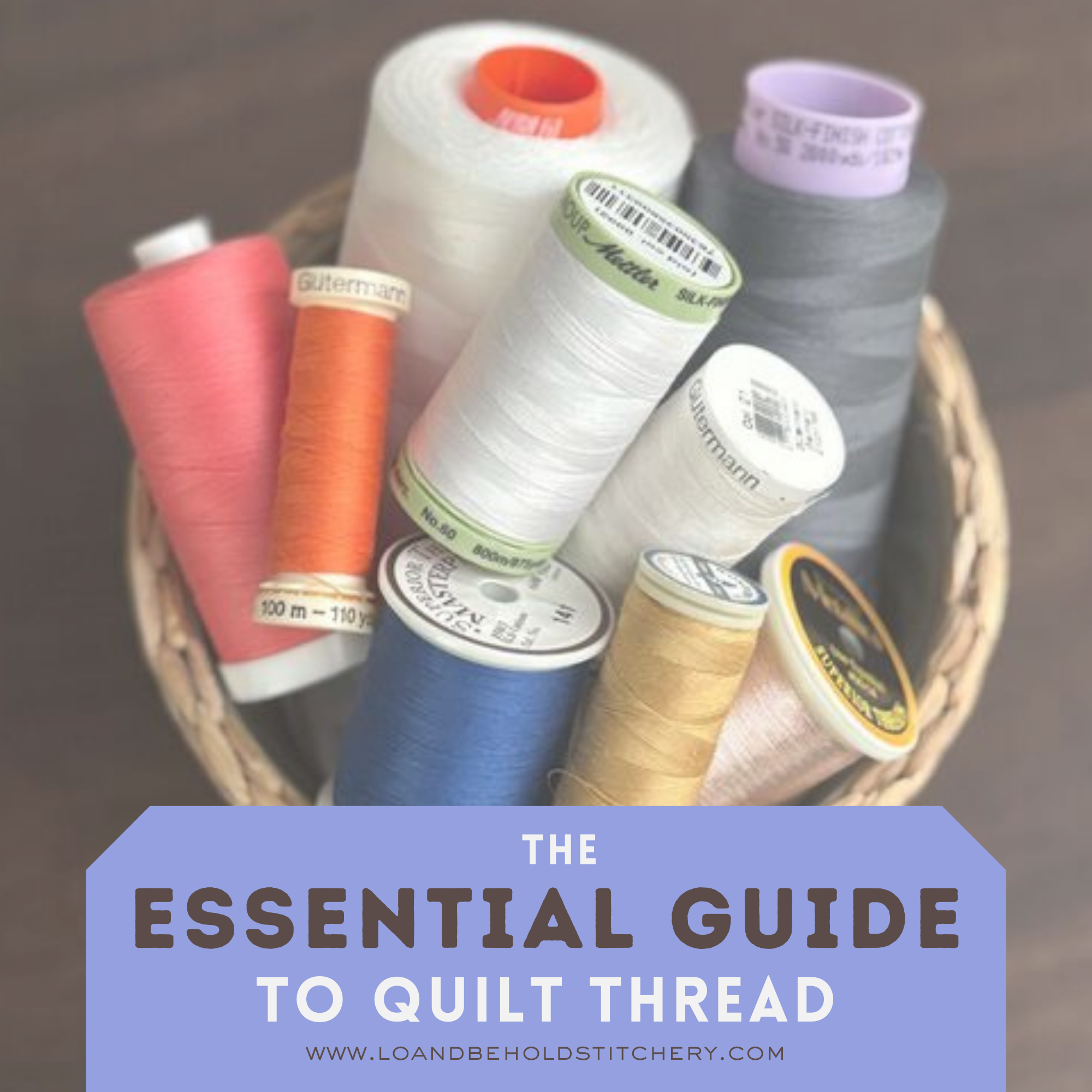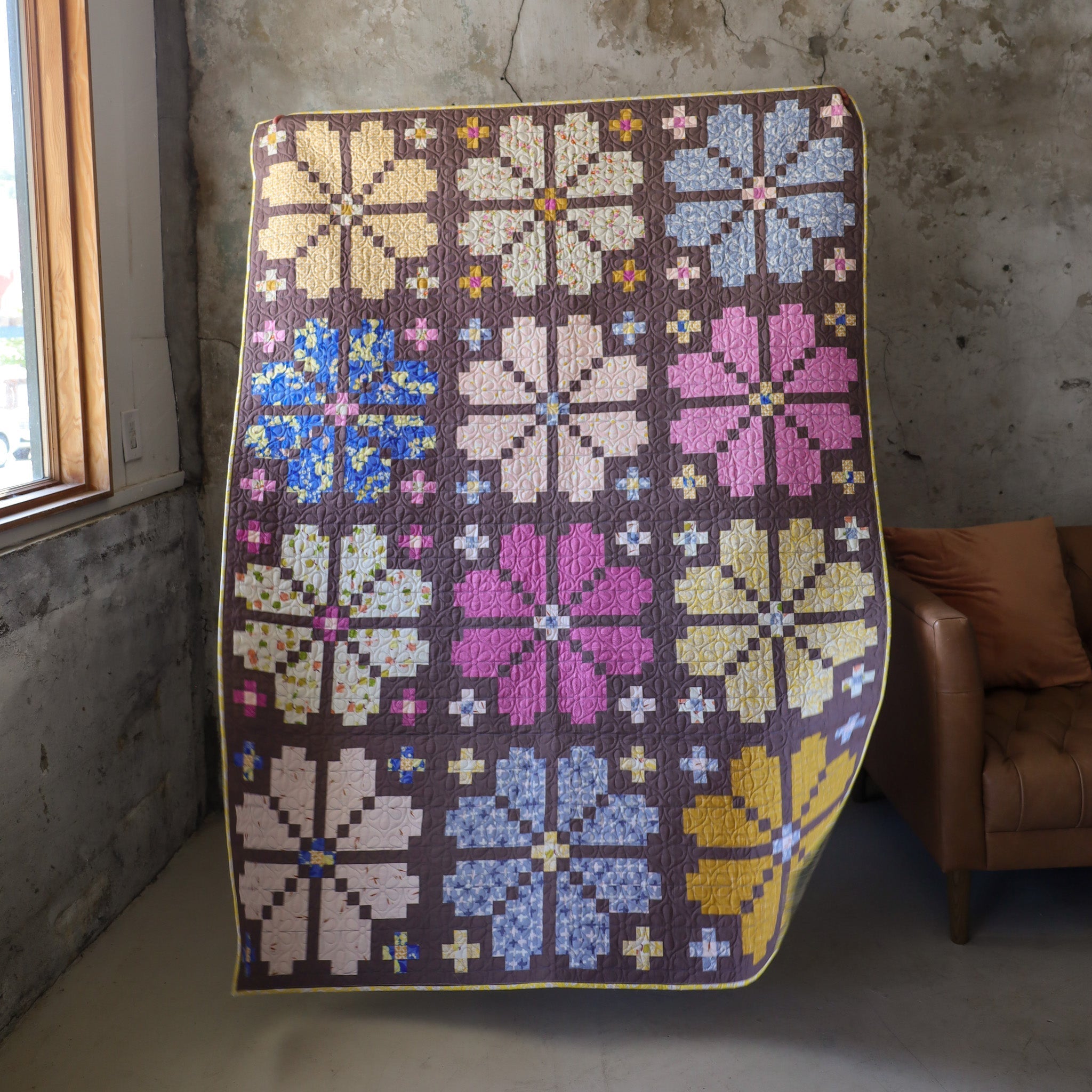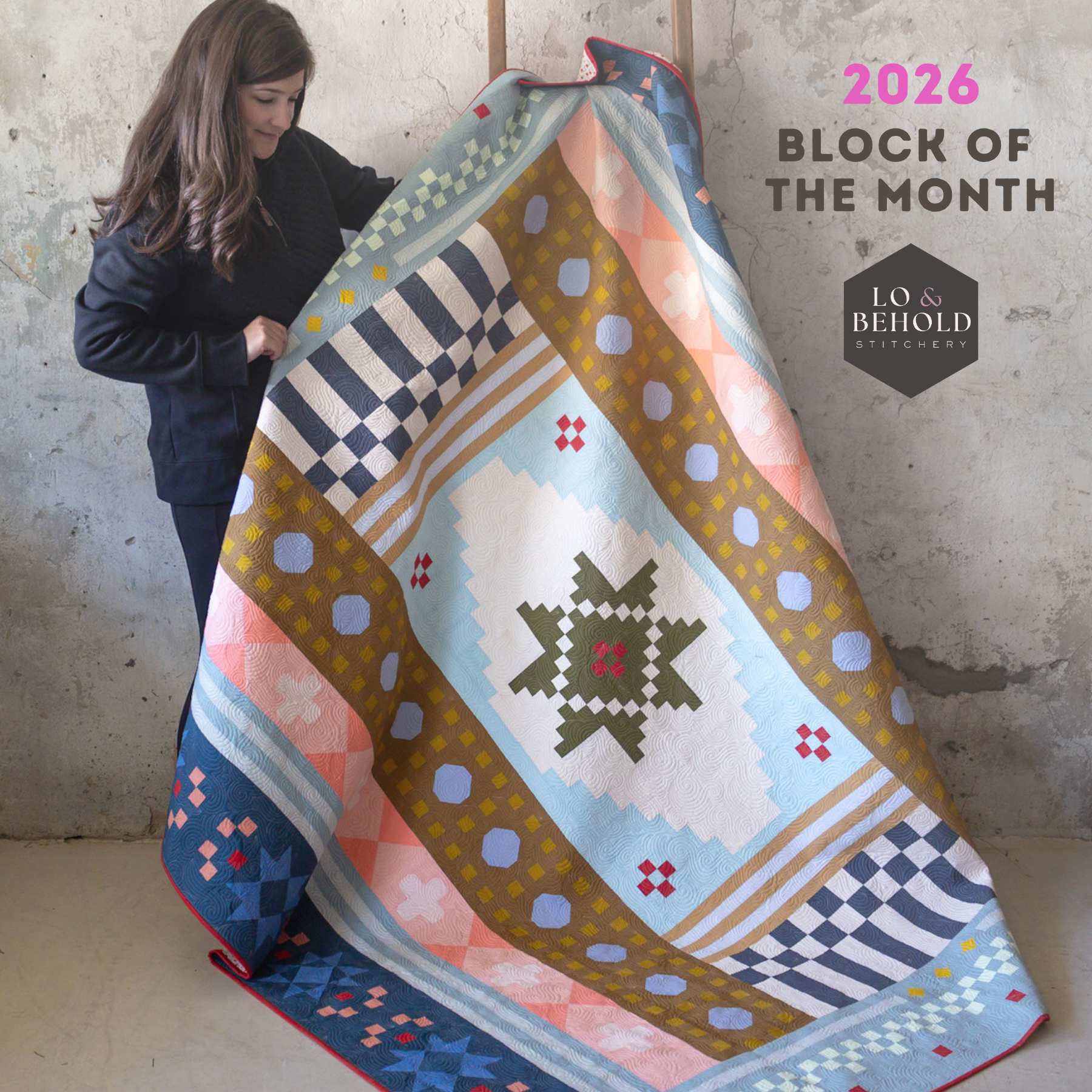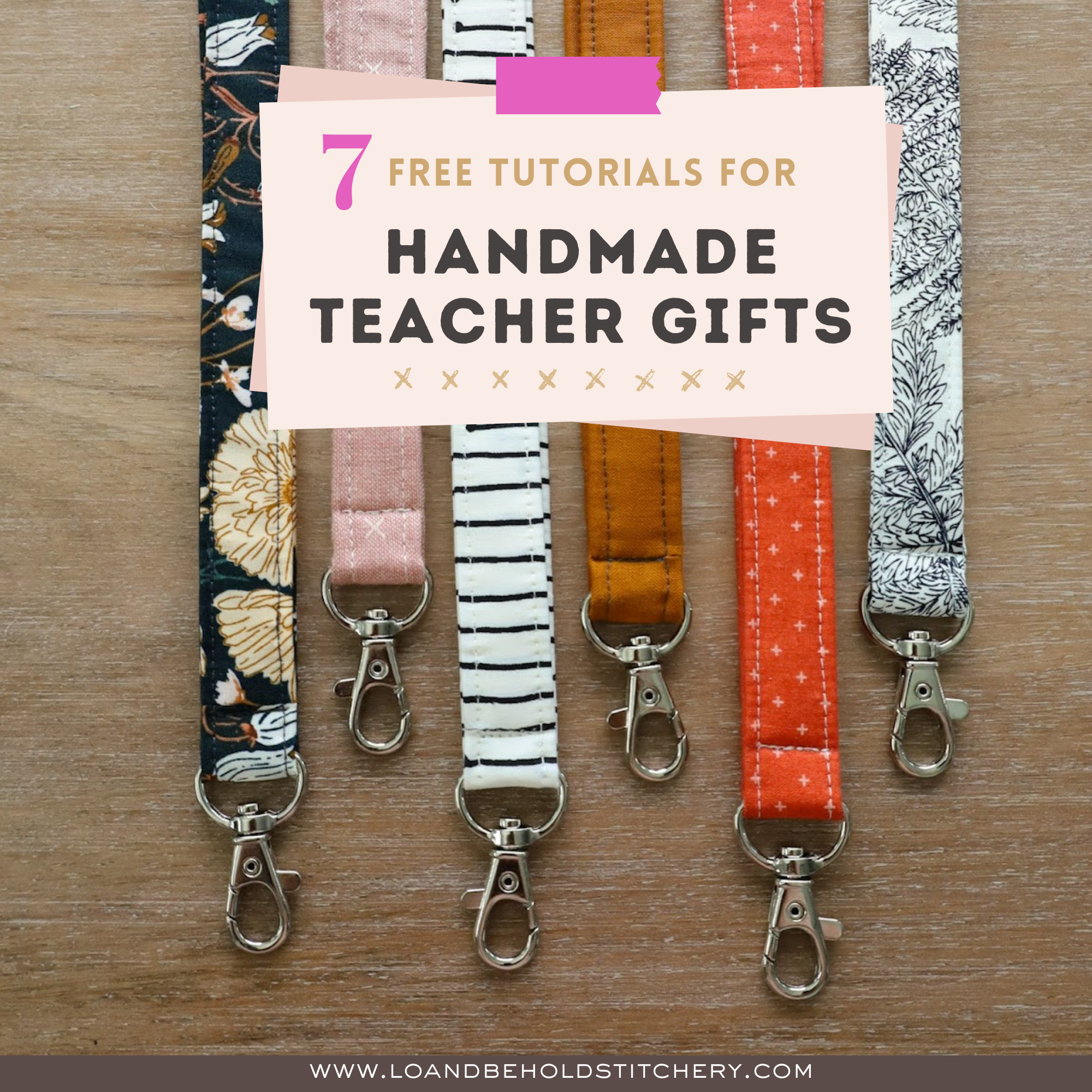The Essential Guide to Quilt Thread

The Essential Guide to Quilt Thread: Choosing the Perfect Thread for Piecing and Quilting Your Quilt
by Rebecca Bratburd
Curious about the best thread for piecing, quilting, or adding those special embroidered touches to your quilt labels? Wondering how to make sense of all the different thread weights, or what to do with that vintage thread you inherited? Let’s walk through it together!
With so many types, weights, and colors to choose from, thread can feel like one of the more confusing quilting notions. But once you grasp the basics, you can begin using thread with confidence, adding precision and personality to every project.
Welcome to your go-to guide for quilting thread!
This guide offers a starting point for understanding the purpose of various thread types and how to align them with your vision. When you select thread intentionally, your quilting process becomes more enjoyable and your finished work reflects more of your style. Whether you are looking for a sturdy, low-profile thread for precise piecing or planning to finish with large, expressive stitches, this resource can help you make informed choices.

At a glance, 50 weight cotton thread is the most commonly recommended option for both piecing and quilting, as it performs reliably across a wide range of projects. You could use it for every quilt and get beautiful, consistent results. However, experimenting with different materials and thread weights can bring a beautiful, personalized touch to any design.
Because thread is one of the most affordable quilting supplies, it offers a low-pressure way to experiment with color, texture, and finish. The number of thread types is manageable, even if the color options seem endless. To keep things simple, this guide references products from Aurifil, Mettler, and WonderFil. These are some of our favorites, though we’re not knocking all the other great choices available from brands like Superior Threads, Gütermann, and Fil-Tec.
Before we go more in depth, let’s talk about vintage thread. We love vintage and antique quilts just as much as new and modern ones. But when it comes to piecing and quilting, you’ll avoid a lot of frustration by using fresh thread. Old thread may look charming, but if the fibers have weakened with age, it can break easily and even damage your work. Now, let’s dive into some key terms!
Thread Terminology
Weight (wt)
Thread comes in a range of weights, from fine to heavy. The weight is abbreviated as “wt,” and it refers to the thickness of the thread. A lower number means a heavier, thicker thread, while a higher number indicates a finer, thinner one. For example, 12 weight (12wt) thread is a popular choice for big stitch hand quilting because of its bold, visible texture. In contrast, 50 weight (50wt) thread is a common choice for piecing, since it creates flat seams and runs smoothly through sewing machines. Selecting the right thread weight helps you get the results you want; it’s also important to ensure your thread is compatible with your needle type and with whether you’re sewing by hand or with a machine.
Monofilament
Made with gray or clear nylon or polyamide, monofilament thread is a type of quilting thread that’s designed to completely camouflage into your project. Its transparency allows it to disappear into the fabric, making it an ideal choice when you don’t want the thread to be visible.
Variegated
Any time you see a variety of colors on a thread spool, that’s achieved through a dyeing process that creates shifting tones as you sew. True variegated thread is dyed with a random mix of colors, while shaded thread offers several tones within the same color family. Multicolored thread often includes a wider range of colors, sometimes a dozen or more. This is where a detail-oriented quilter can have a lot of fun in adding an ombre effect or modern flair to their quilts.
Sashiko and Embroidery Floss
Quilters may keep Sashiko thread and embroidery floss on hand for hand-sewn quilt labels, decorative binding stitches, and even quilting. Sashiko is a traditional Japanese embroidery technique, while embroidery floss (not to be confused with waxy dental floss!) contains multiple layers of thread and is more common in American and European traditions. These types of threads are strictly for hand-sewing, and can’t be used in sewing machines.

How to choose your thread type
When picking thread for piecing or finishing your quilt, it’s all about choosing the right thread weight for what you’re trying to do. While experimenting can be fun for art quilting, for regular quilt making, it’s best to focus on options that are efficient, precise, and durable.
The world of specialty and novelty thread is always growing, with fun options like metallic and glow-in-the-dark threads that can add a creative touch to your projects. No matter what style of quilting you enjoy, there’s a thread out there for every idea you have.
Pick your piecing thread type
Quilters have a wide range of thread weights to choose from, from 5wt to 80wt. However, 50wt thread is typically the best choice for piecing, as it lays flat in seams and provides enough strength to hold fabric together over time (when using the correct seam allowance).
Most thread manufacturers (Aurifil, Fil-Tec, WonderFil, Superior Threads, Gütermann, Mettler… the list goes on!) offer 50wt options in materials like cotton, polyester, and polyamide. There are no strict rules about mixing materials for quilt tops, batting, or thread, but keep in mind that different materials may shrink differently. Choose your piecing thread type based on your preference for how much “crinkle” you want in your finished quilt.
Pick your quilting thread type
If you’re hand quilting or tying a quilt, lower weight (thicker) thread can offer a modern and punchy look. Higher weight (thinner) thread is often used for a more traditional and sophisticated look. Free motion quilting and longarm quilting offer flexibility, allowing you to experiment with various thread types depending on the look you want.

Settle on your color(s)
Once you’ve selected your thread weight, it’s time to have some fun with colors! Manufacturers offer hundreds of colors across all thread weights and types, giving you plenty of choices to suit your project.
While it’s totally fine to get creative with bright colors like hot pink for piecing, many quilters go for neutral shades like off-white or gray. These colors are subtle and won’t distract from the quilt’s design, even if they peek through a seam. If your quilt has a dark background, black thread can work well, but it might not be the best choice for lighter fabrics.
Modern threads are generally very colorfast, so you won’t need to worry about them staining your quilt. But, if you have concerns, toss a few Shout Color Catchers in the first wash!

Check for compatibility
Needles and threads come in a variety of sizes, so it’s important to make sure they work well together. For machine piecing, most quilters use size 80/12 needles with 50 weight thread. They go together like peanut butter and jelly: reliable, classic, and always a good match. Switch to a 90/14 needle for machine quilting though!
If you’re hand quilting, just make sure your thread isn’t too thick for the needle’s eye. Finding the right match will make stitching smoother and help keep your hands happy by preventing breakage or strain.
Manufacturers provide specifications on thread and needle sizing (for example, Aurifil, Mettler, and WonderFil).

Thread reference chart


Tying It All Together
Choosing the right quilting thread can feel overwhelming at first, but it truly comes down to finding what feels right for you. Most manufacturers use similar terms to describe thread weight and finishes, making it easier to try out different brands and types. Trying out new colors and textures can even become one of the most enjoyable ways to add your own touch to a quilt.
When you are unsure where to start, 50wt thread is a reliable choice. It strikes a great balance between strength and subtlety, helping seams stay secure while laying nice and flat. Don’t worry about what the quilt police or show judges prefer when it comes to cotton or polyester! What matters most is that the thread supports your quilt and your creative vision.
As you keep stitching, try exploring different thread weights and types. We’ve put together our own Needle and Thread Sampler, and preorders are open. You might be surprised by how much they can change the look and feel of your work. Each time you experiment, you get closer to discovering what suits your style. Before long, you will have favorite threads that bring your quilts to life. Enjoy the process!
OTHER POSTS YOU MAY ENJOY!
The Essential Guide to Quilt Batting
How to Make a Pillowcase with French Seams
12 Tips for Sewing with Long Seams



